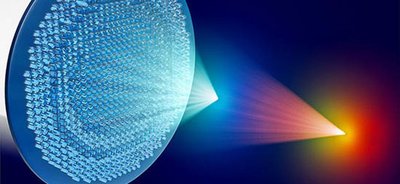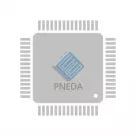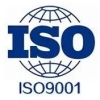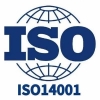Optical Communications to the chip level: Reshaping the future of the Data center

Today, this development of information technology is known as Fast yo, and the structure and performance of the data center as the core that supports our digital world are facing great challenges! You see, technologies such as cloud computing, the Internet of Things and big data continue to expand, placing increasing demands on data center bandwidth and data processing speed. But don't be afraid, the rise of optical communication technology, especially to the development of the chip level, can bring revolutionary ways to the layout of the future data center!
What is optical communication? In fact, optical communication is a technology that uses light waves to transmit information. Compared with traditional electrical signal transmission, optical communication can provide higher bandwidth, longer transmission distance, and lower energy consumption! Optical fiber is the carrier of optical communication, and its advantage is that a large amount of data can be efficiently transmitted through thin optical fiber cables, so that the speed of information transmission is very fast!
Why chip-level optical communication? As the amount of data explodes, traditional circuits are limited in terms of processing speed and bandwidth. In the process of the development of optical communication to the chip level, the data processing, transmission and storage of photon technology are integrated into the BZX84C20-13-F chip, which can realize more efficient data processing. First, chip-level optical communication can greatly reduce signal loss and latency, making the entire data center operate more efficiently. In addition, after the development of photoelectric integrated circuits, the volume of related components can be greatly reduced, so that more compact designs can be made.
How does optical communication work in a data center? There are many application scenarios for chip-level optical communication, especially in hyperscale data centers. Modern data centers typically consist of thousands to tens of thousands of servers that often transfer large amounts of data between them. When the amount of data is large, the traditional cable transmission is prone to bottlenecks, and when optical communication is introduced, the data center can transmit data at the speed of light, so that the storage and processing capacity can be effectively improved.
Not only can the data transmission speed be significantly improved, chip-level optical communication can also greatly reduce power consumption! In electro-optical conversion, the energy efficiency of the optical communication system is better than that of the traditional electrical communication system, reducing the energy consumption and also reducing the heat dissipation requirement. This can not only meet the increasing load of data centers, but also make more rational use of energy, which is conducive to sustainable development!
What is the technical architecture and composition? The technical architecture of chip-level optical communication generally consists of several core parts, such as laser, optical waveguide, detector and related circuit. These components can be miniaturized to enable complex optoelectronic processing functions on a single chip. At the time of design, the optical waveguide is responsible for guiding the signal, the laser acts as the signal source, and the detector receives the optical signal and converts it into an electrical signal.
Through this integrated design, the system not only occupies less space, but also greatly improves the electro-optical conversion efficiency at high speed. With the development of cutting-edge technologies such as quantum dots, light modulation and light switches, optical communication chips will become smaller and better in the future.
What are the challenges and opportunities of continuous promotion? Although the development potential of chip-level optical communication in data centers is very large, there are still a series of technical difficulties. For example, in the manufacture of optical communication chips, how to maintain high precision and high consistency is a key problem. In addition, the limited integration of optoelectronic components, cost issues, and compatibility with existing telecommunications infrastructure are also important issues to be addressed.
However, these challenges also present opportunities. From system design to actual deployment, manufacturers and research institutions are constantly trying to solve technical problems related to chip-level optical communication. Investment and innovation are also driving the development of this area, especially in the application of cutting-edge technologies such as high-performance computing, machine learning and artificial intelligence, and the potential of optical communication is well worth looking forward to.
It's also important to set standards for the future! With the development of technology, it is imperative to formulate the standard of chip-level optical communication. Standardization can not only promote the maturity and upgrading of technology, but also promote the formation of the industrial chain! Major companies and institutions should not only cooperate in technology research and development, but also jointly develop suitable business models and application prospects,to ensure the healthy and rapid development of optical communication technology.
In the future, the popularity of chip-level optical communication is inevitable, which will inevitably affect the layout and design of data centers. Data centers that adopt optical communication technology earlier have obvious advantages in operational efficiency, energy consumption, and equipment management. This will drive the entire industry to re-examine data processing architectures and slowly transition from traditional electrical communications to optical communications.
The evolution of optical communication to the chip level is not only a technological innovation, but also a potential leader in the future development of the data center. With the continuous development and application of optical communication technology, we will usher in a new era of more efficient, flexible and sustainable data centers!
您可能感興趣的產品
 |
CAR3012TEBX5Z01A | AC/DC CONVERTER 12V 3000W | 7740 More on Order |
 |
CP2000AC54TEP | AC/DC CONVERTER 54V 5.2V 2000W | 5490 More on Order |
 |
MDT040A0X43-SRPHDZ | DC DC CONVERTER | 5616 More on Order |
 |
TJX120A0X43PZ | DC DC CONVERTER 0.6-1.5V | 2466 More on Order |
 |
UNDT006A0X3-SRZ | DC DC CONVERTER 0.45-5.5V | 7704 More on Order |
 |
QRW025A0G1-HZ | DC DC CONVERTER 2.5V 63W | 4086 More on Order |
 |
AXA010A0M93-SRZ | DC DC CONVERTER 1.5V 15W | 8208 More on Order |
 |
AXA010A0G3Z | DC DC CONVERTER 2.5V 25W | 7470 More on Order |
 |
HC010A0F1-SZ | DC DC CONVERTER 3.3V 33W | 6804 More on Order |
 |
QW020A0Y1Z | DC DC CONVERTER 1.8V 36W | 3618 More on Order |
 |
QRW035A0F841-H | DC DC CONVERTER 3.3V 116W | 2178 More on Order |
 |
FNW700R64-18Z | DC DC CONVERTER 28V 700W | 7092 More on Order |
 |
APTS020A0X3-SRDZ | DC DC CONVERTER 0.6-5.5V 110W | 3294 More on Order |
 |
JAHW075A1 | DC DC CONVERTER 5V 75W | 3978 More on Order |
 |
EQW020A0F1 | DC DC CONVERTER 3.3V 66W | 6066 More on Order |
 |
AXA016A0X3-SR | DC DC CONVERTER 0.8-5.5V 88W | 8370 More on Order |
 |
ATA010A0X43-SR | DC DC CONVERTER 0.8-5.5V 55W | 2268 More on Order |
 |
QBVW025A0B1-PHZ | DC DC CONVERTER 12V 300W | 6570 More on Order |
 |
JRCW016A0R641Z | DC DC CONVERTER 28V | 8766 More on Order |
 |
QBVW033A0B941Z | DC DC CONVERTER 12V | 8730 More on Order |
 |
KBVW006A0B41-HZ | DC DC CONVERTER 12V 72W | 8208 More on Order |
 |
ESTW015A0F641Z | DC DC CONVERTER 5V 75W | 2880 More on Order |
 |
IND065BLV | DC DC CONVERTER 16-34V 65W | 4986 More on Order |
 |
KHHD004A2B41Z | DC DC CONVERTER 12V 50W | 96882 More on Order |









